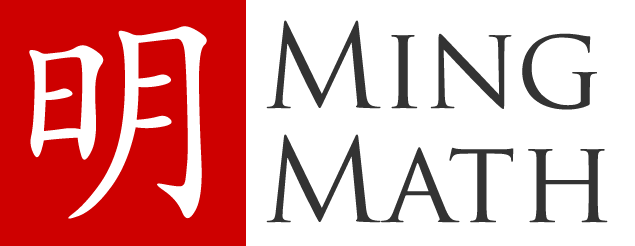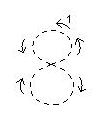
Writing the Number Eight
Let’s start with something simple, very simple. But something probably most parents/teachers struggle with: teaching kids to write the number eight "8".
Typically, the way to write it is described as “half circle to the left, and then half circle to the right, and then go back up”, as shown in the following picture.

And of course, no child would be able to remember that, so often the simpler approach of “two circles on top of each other” is introduced, which helps kids to correctly draw the shape of number eight.
I have been going through these two methods with my preschooler son (who had been drawing two circles on top of each other). But recently, I came across a genius description of how to write 8 : “Write a capital S and then without lifting your pencil, connect the two ends of the S.”
The next day I told my son about this cool adult way of writing 8, and he got it right away. After just telling him once about this method, I’ve never had to remind him how to do it, and he has been writing 8′s perfectly ever since.
Teaching children to write the number eight is not the main reason I am writing this particular blog post. What I want to talk about most is where I found this piece of information and what it has to do with Ming Learning.
This genius idea of writing number 8 is from a book on children’s mathematics learning by a professor that I used to work with and greatly respect. It is a great book, the best book ever in teaching children mathematics. It has all the detailed explanations, activities, examples, teaching techniques that one will ever need to teach children math. If anyone truly understands and follows the book as he/she teaches, he/she will be a great teacher.
However, this is a book with 500+ large pages, printed in small font, with a very heavy usage of specialized vocabulary, and costs over $100. In short, it’s not accessible to most parents.
Research on the teaching and learning of mathematics has uncovered many insights and techniques that are effective, but for various reasons, this valuable information often does not make it to parents:
- Research findings are usually written by and for researchers within academia.
- Results are not often written in layman’s terms and can be difficult to understand.
- When results are available to the public, they are often published in books that are expensive and take a while to read.
That’s why we want to start Ming Learning. We will:
- uncover the hidden treasures from books that you probably would have never heard of,
- create content based on knowledge of teaching in different cultures,
- provide learning platforms for learners to engage in meaningful learning and practice,
- provide descriptive feedback on performance that helps teachers and learners to reflect on the learning results.
Our goal is to use our training and expertise to help parents and teachers to teach more effectively and for learners young and old to learn as much as they can.